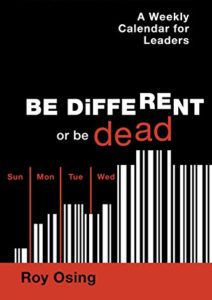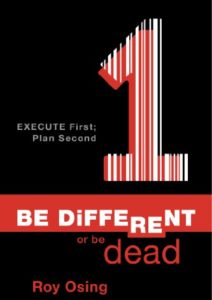Every organization has the goal to grow; this usually translates into generating more top line revenue every year.
The fact is, however, that many employees don’t relate directly to revenue growth.
They “look down“. They are solely focused on their immediate job; what they are responsible for and driven to do as defined by their job description.
Furthermore, in spite of the widely used “balanced scorecard” as a means of engaging employees with corporate objectives like revenue generation, an individual’s salary and bonus are typically weighted more to their position deliverables, leaving little motivation for them to explore how they might make a greater corporate contribution.
Few employees “look up” and understand specifically what they can contribute to “the greater revenue good”.
It’s not their priority. To most people, the strategy of the organization is not their issue; it’s what “the guys upstairs” get paid for.
The problem is, however, when employees are disconnected from the organization’s specific goals, execution fails. What starts out as a grand growth plan is reduced to a dismal failure because employees’ actions are out of sync with what the organization wants to achieve.
How can leaders encourage employees to engage in and commit to delivering the company’s overall revenue goals? The use of performance management techniques can be of great help when looking to measure and improve company results. Along with the balanced scorecard, implementing a strategy map methodology is useful as it helps keep everyone on the same page, and it allows people to see how their jobs affect the company’s strategic objectives.
- Make explicit what each function and position is expected to do to support the revenue generation imperative. Employees can’t be left on their own to determine what “contribution to the whole” they can make; Inconsistency and dysfunction can happen when people decide themselves. Everyone has a slightly different working definition, for example, of “knock your socks off” customer service. And left to their own devices each person will likely practice it the way THEY think it should be done.
- Have each employee review their all job description to ensure there are components that strongly relate to revenue growth and rebalance all position elements to reflect a greater revenue focus.
- Drop tasks and activities that bear little relationship to building revenue. Stop doing non-revenue related tasks and see if anyone notices!
- Employees have great ideas for generating new revenue. Assemble “New Revenue Initiative” teams throughout the organization in all functions to define new revenue opportunities. Involve marketing in reviewing the ideas put forward; submit the ones with the perceived highest potential to further business case rigor. Communicate the results of the teams’ ideas regularly throughout the organization.
Active employee engagement requires “line of sight” leadership.
If employees can’t see a direct line from their job to what the organization wants to accomplish, nothing happens.


















